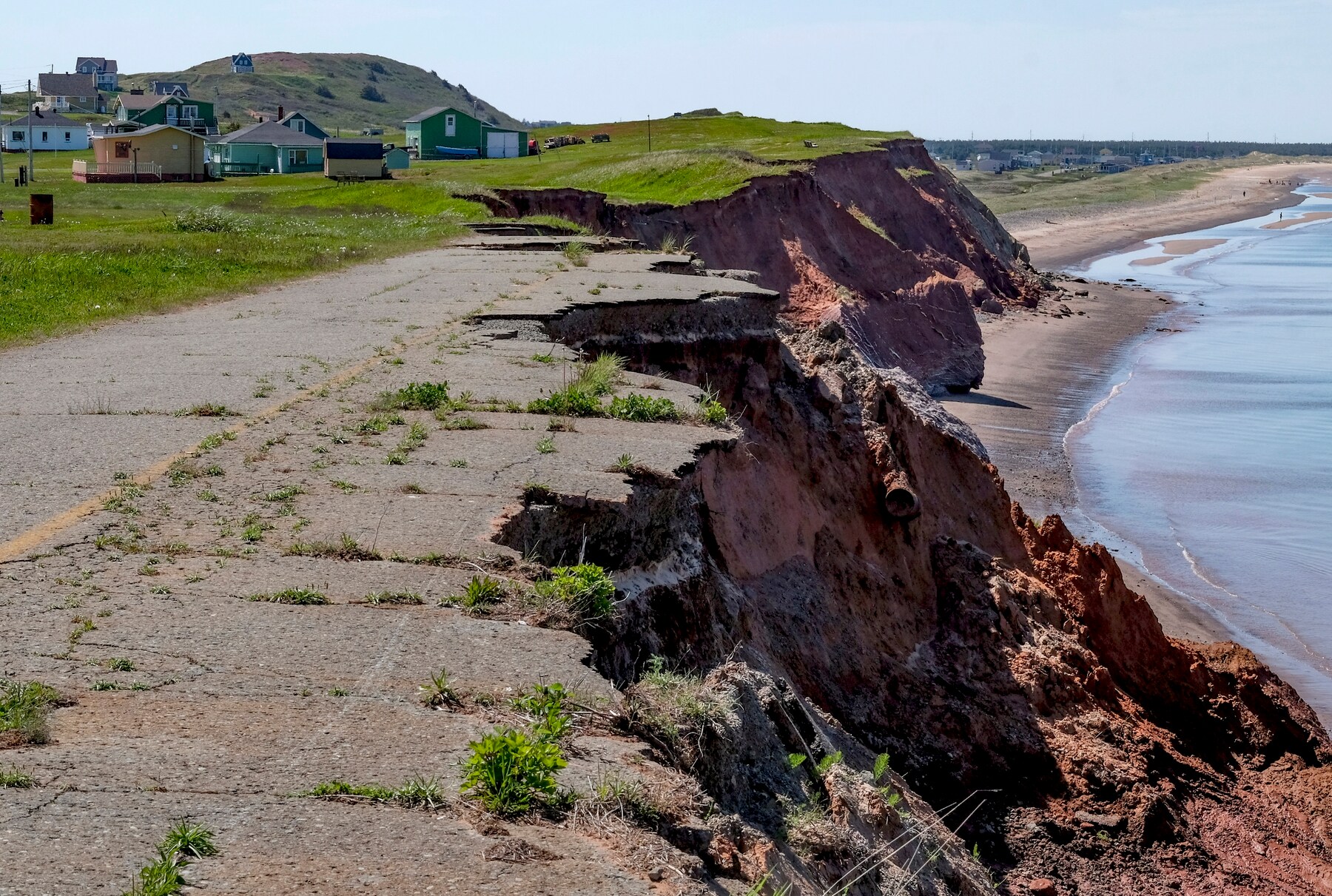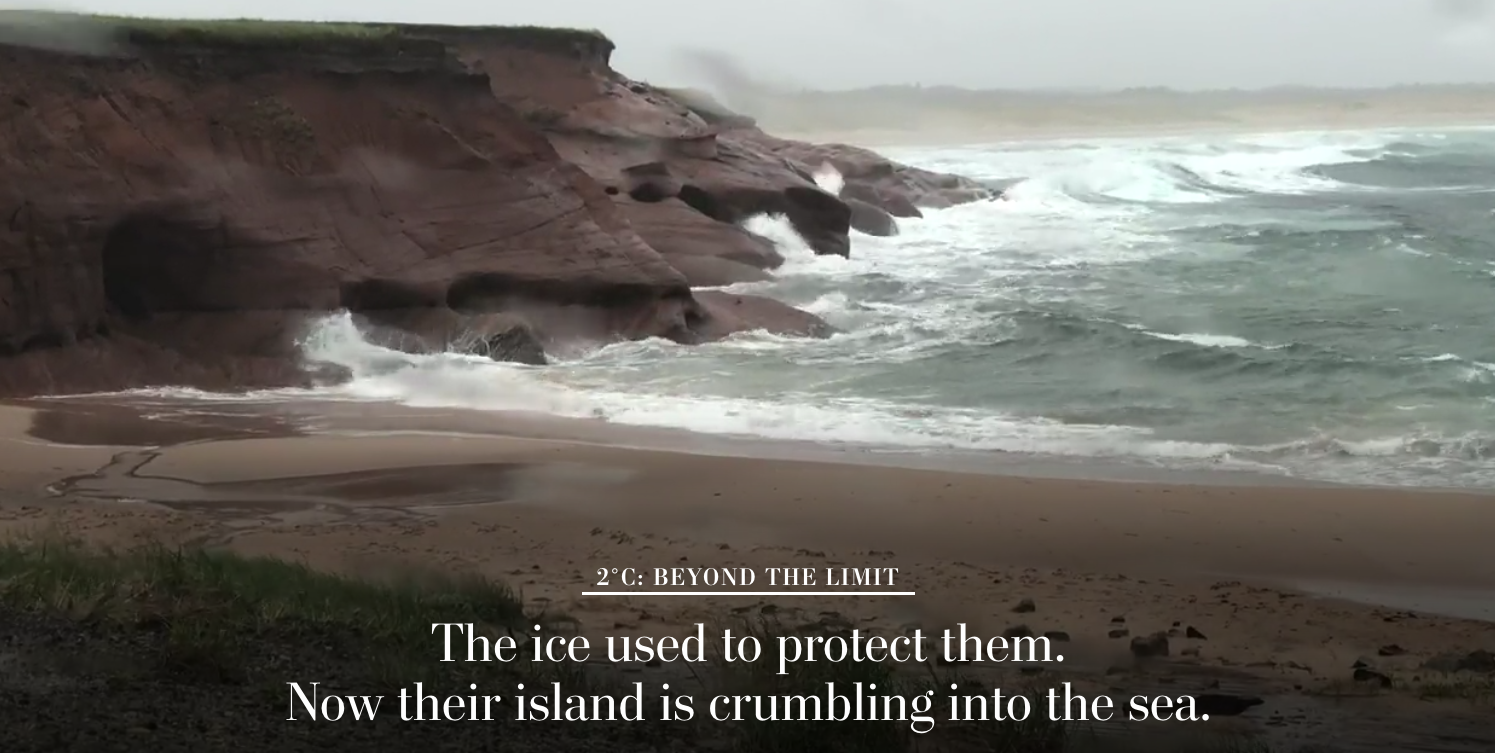La glace servait à les protéger. Maintenant, leur île s’effondre dans la mer…
 ILES-DE-LA-MADELEINE, QUEBEC — High on a bluff overlooking the Gulf of St. Lawrence, Adele Chiasson no longer ventures into her backyard for a simple reason: It is falling into the sea.
ILES-DE-LA-MADELEINE, QUEBEC — High on a bluff overlooking the Gulf of St. Lawrence, Adele Chiasson no longer ventures into her backyard for a simple reason: It is falling into the sea.
“I’m afraid to go out there,” the widow said one afternoon from the safety of her kitchen. She nodded toward the 70-foot-tall, red sandstone cliffs out back that creep closer with each passing year. “You never know when a section will fall off.”
Decades ago, when she and her husband moved to this modest house with its majestic views, they never imagined a vanishing coastline might one day drive them away. But the sea long ago claimed the ground where their children once played. An abandoned road out back has mostly crumbled into the surf below. Two of her neighbor’s homes have been moved inland.
The day might come when she, too, will be forced to abandon this precarious patch of earth. “I might not have a choice,” she says.

The more than 12,000 residents of this windswept Canadian archipelago are facing a growing number of gut-wrenching choices, as extreme climate change transforms the land and water around them. Season after season, storm after storm, it is becoming clearer that the sea, which has always sustained these islands, is now their greatest threat.
A Washington Post examination of the fastest-warming places around the world has found that the Magdalen Islands, as they are known in English, have warmed 2.3 degrees Celsius since the late 19th century, twice the global average.
As in New England, Siberia and other global hot spots at higher latitudes, winters here are heating up even more quickly, eclipsing 3 degrees Celsius. That change has fueled freezing and thawing cycles here that wreak havoc on the famous — and famously fragile — sandstone cliffs.




